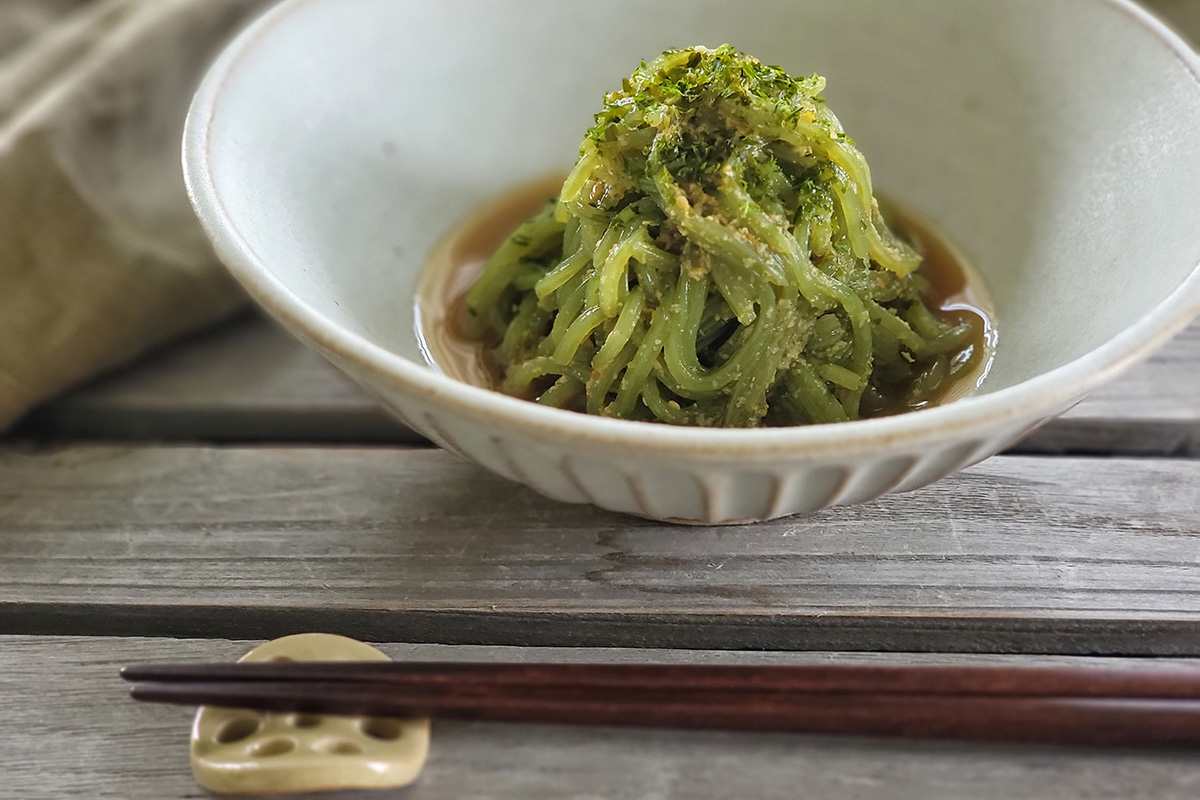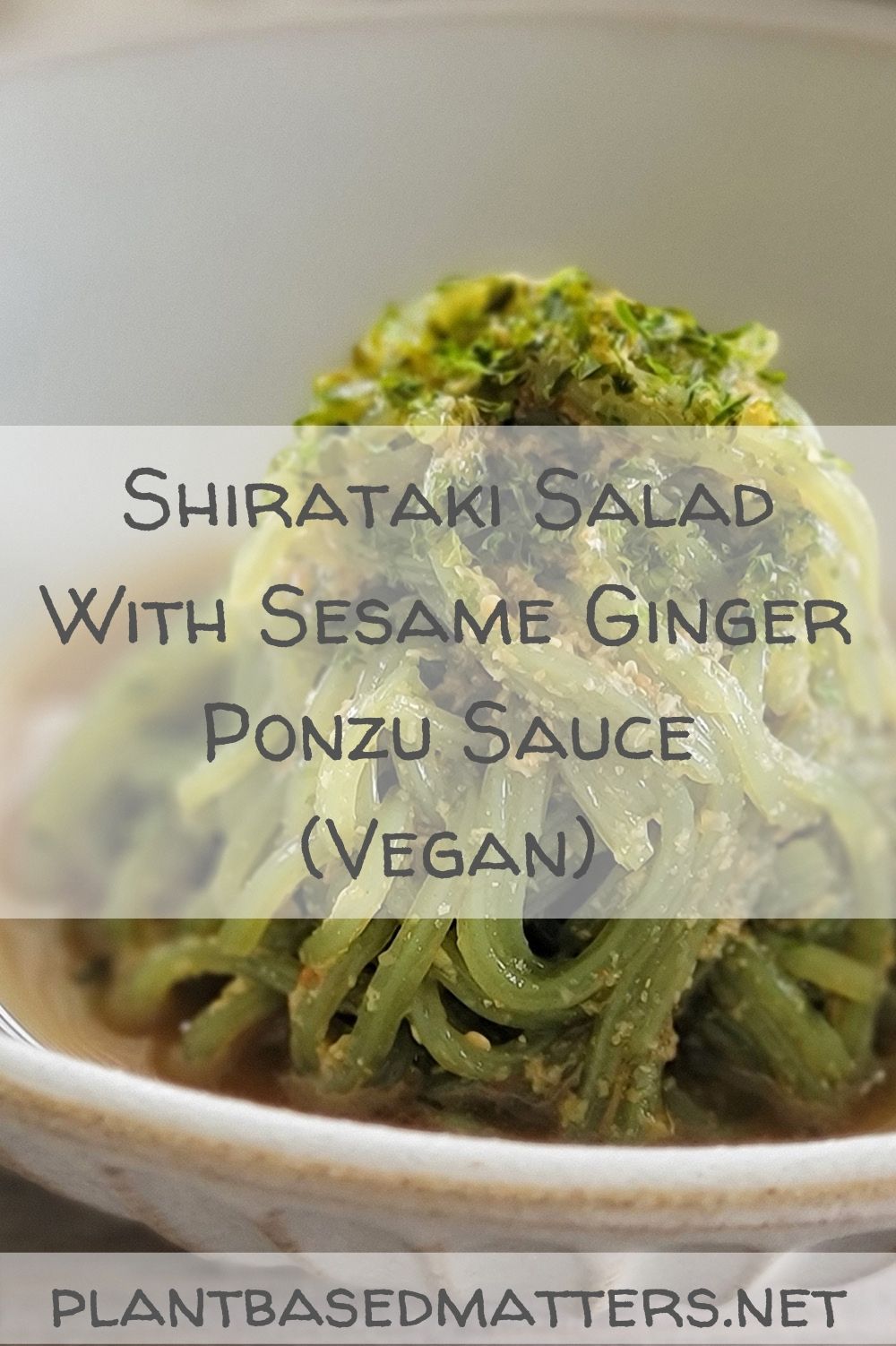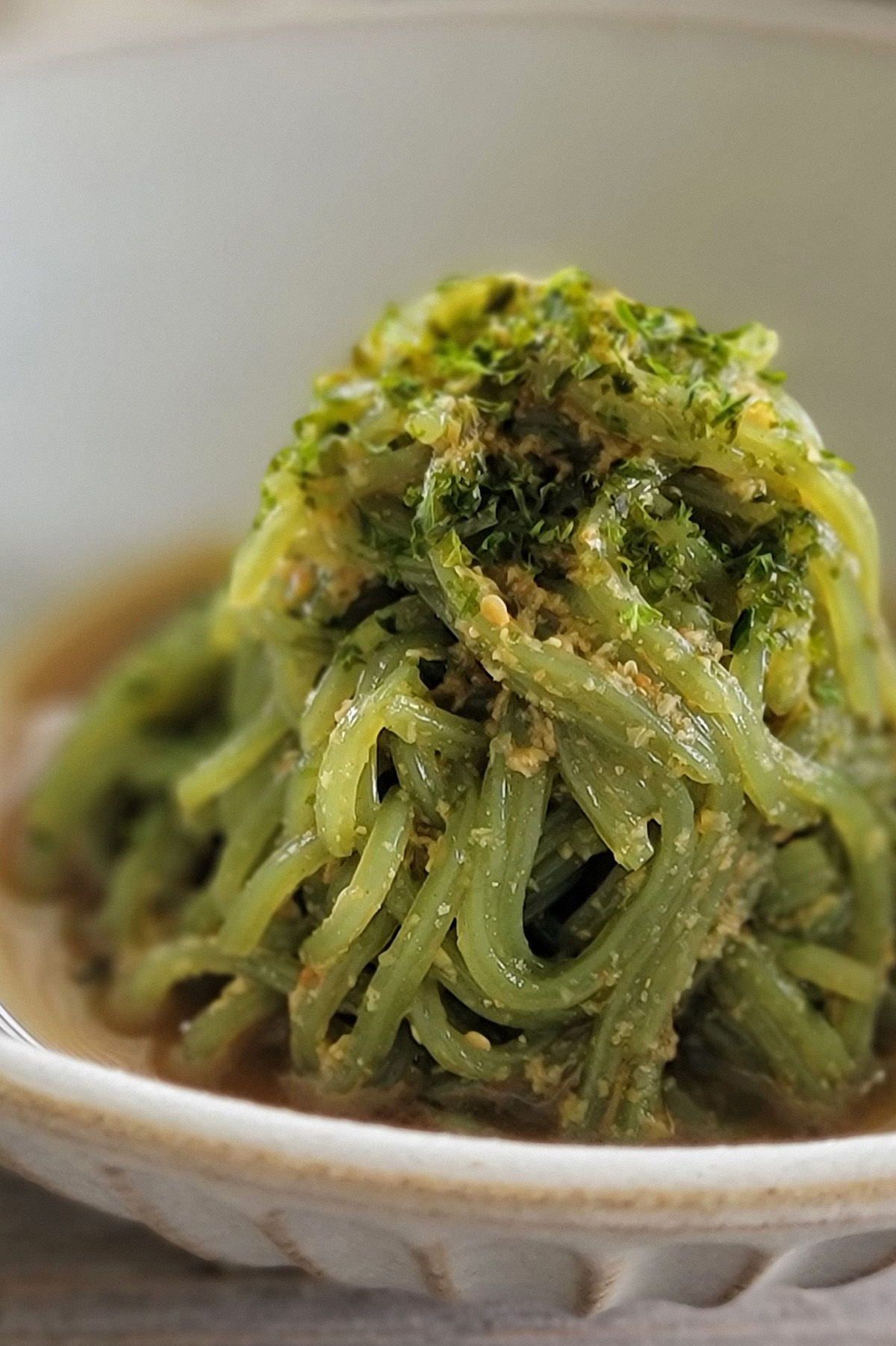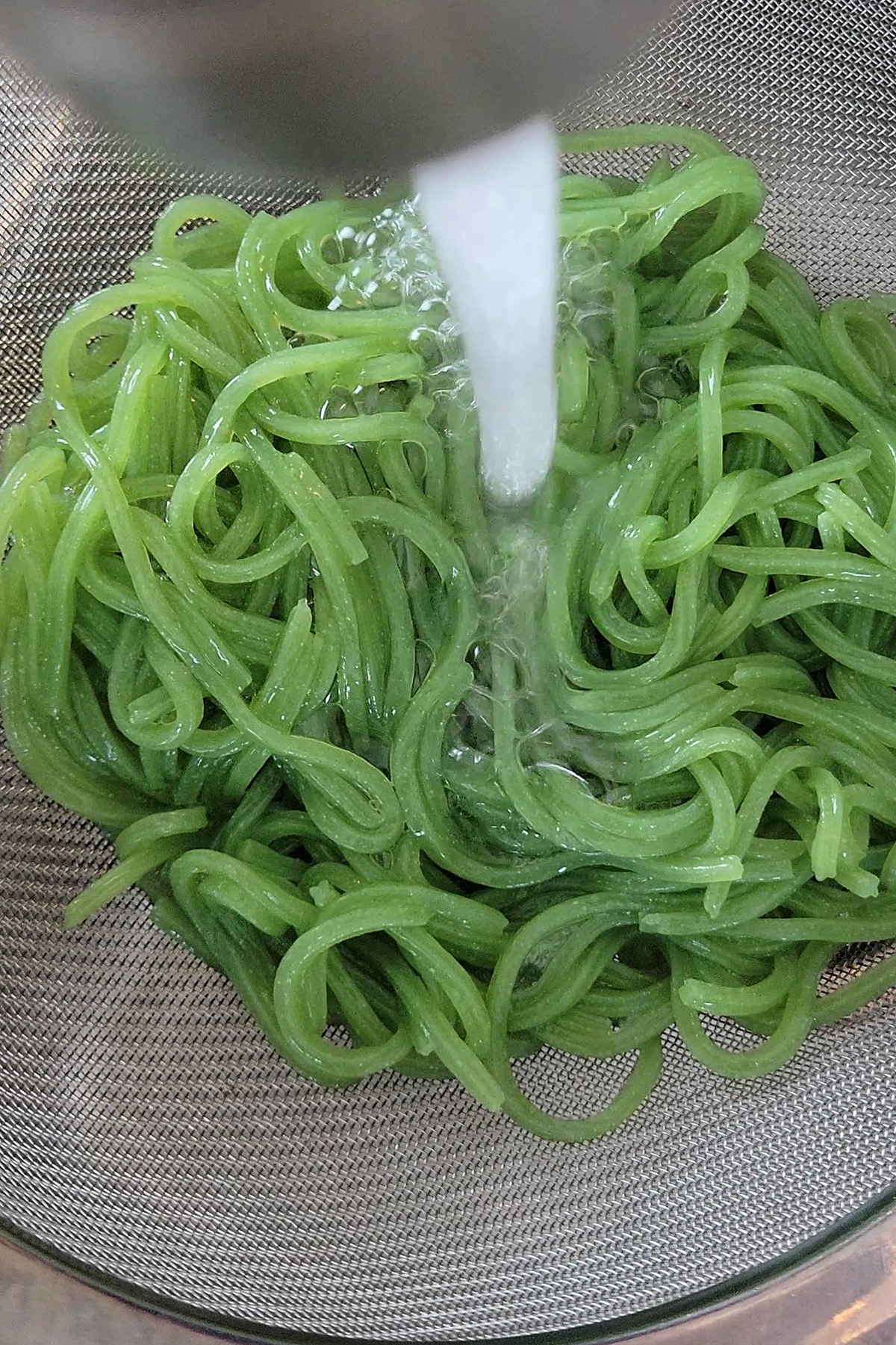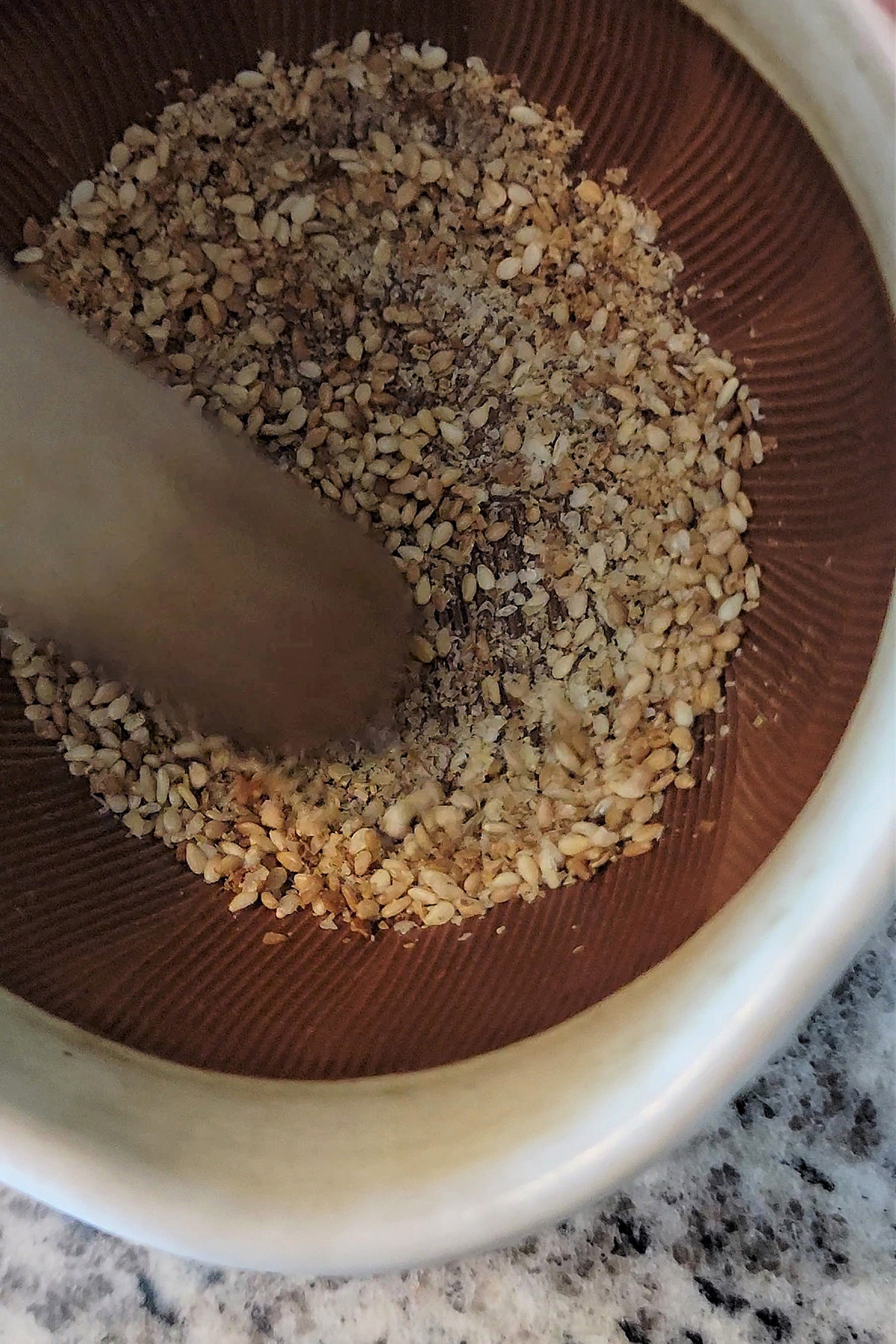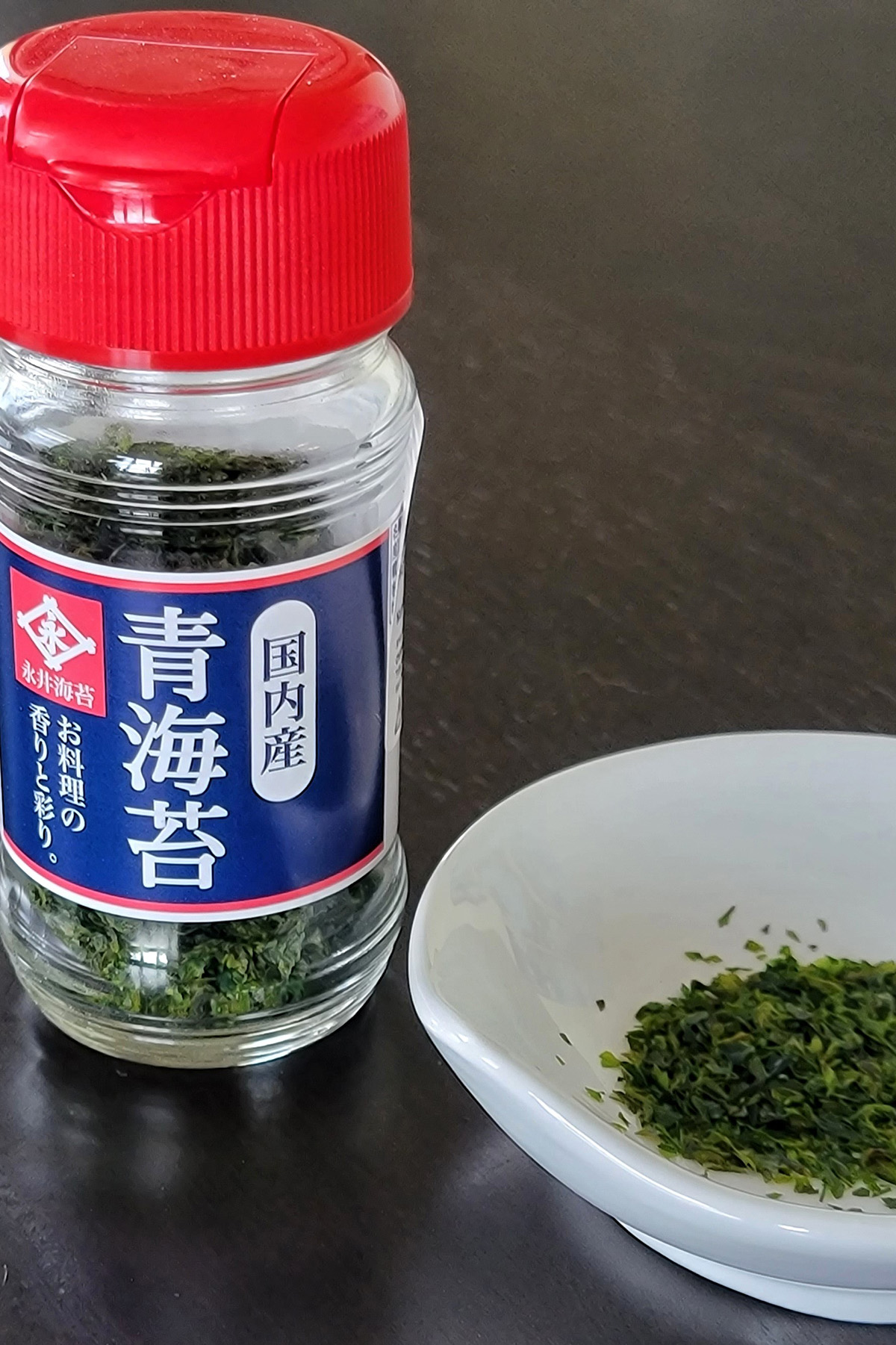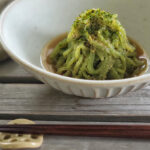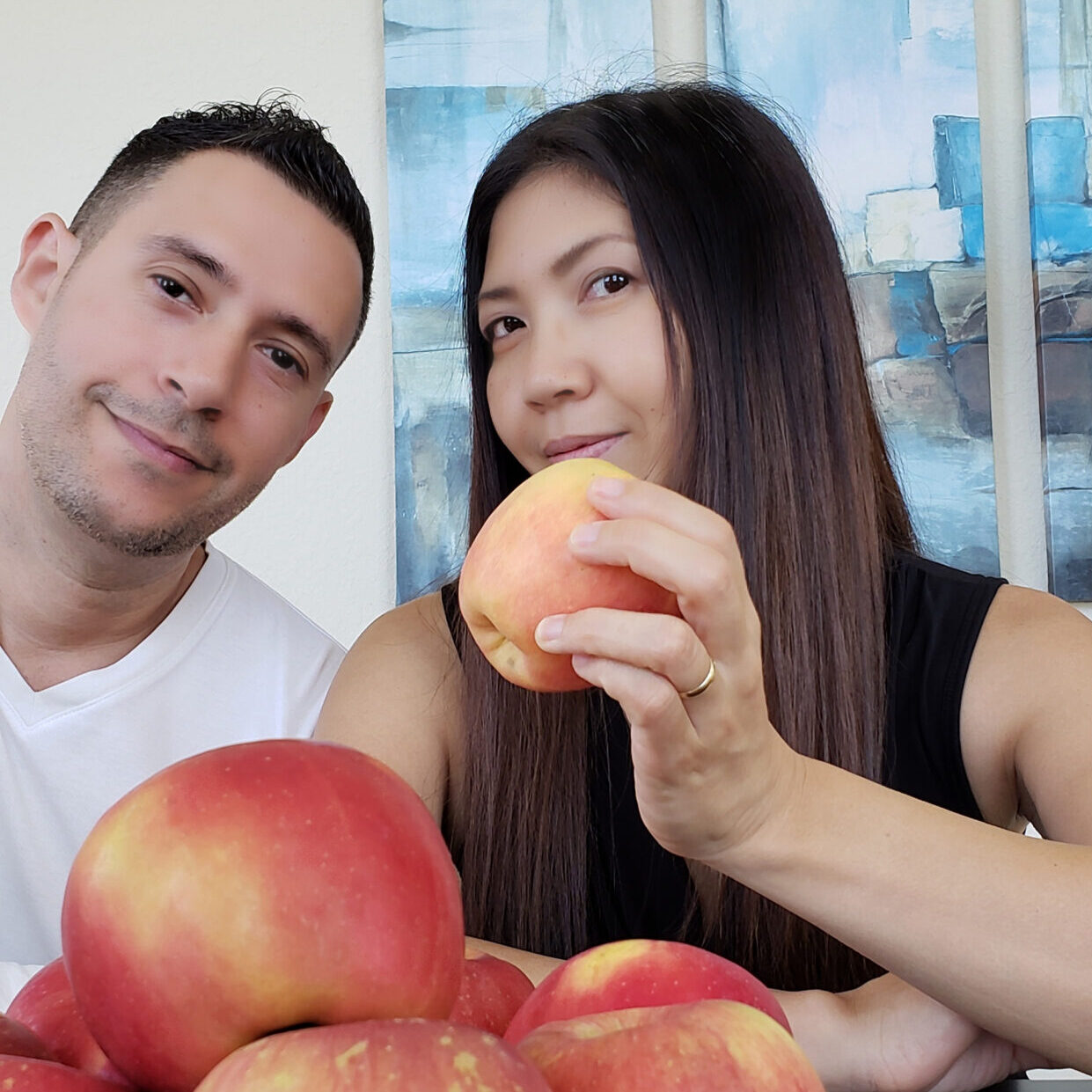Last Updated on June 3, 2023
[しらたきの胡麻生姜ポン酢和え]
If you’re a noodle lover like me, here is a guilt-free noodle recipe for you! Shirataki Salad With Sesame Ginger Ponzu Sauce is a cold salad-type dish. It’s refreshing yet has robust flavors from ground toasted sesame seeds, freshly grated ginger and ponzu sauce. With a sprinkle of aonori (Japanese green laver seaweed flakes) on top, it adds another tasty & healthy layer to the dish!
Inspiration
This dish was created in the reminiscence of my childhood memory. It may sounds strange to you but this reminds me of the after school snack that I used to eat. I’ve forever been a savory-food person so my ideal snacks were ramen or any sort of noodles or fried rice.
My mom would quickly put this together right after I came home. I ate it real fast because I had to head out again to go to my violin lesson. This noodle dish held me over until I came home from the lesson to eat “real” dinner.
Actually, the one my mom used to make as the after school snack was the pre-made & packaged one. But I remember the package contained green color shirataki noodles, a packet of ponzu sauce (I’m sure it was made with fish dashi stock) and a packet of dried/dehydrated sprinkles of sesame seeds, ginger, and aonori flakes. It was so easy for her to assemble it to feed me a quick snack.
I still clearly remember how it tasted and how satisfying it was. Even back then as a child, I’d known that this was a heathy snack for me! Thanks to my mom, I’d never eaten chips, candies or any other unhealthy typical snacks 🙂
Sesame Ginger Ponzu Sauce
The dish is prepared pretty simple so it tastes exactly what’s in the dish. The sauce is made with ponzu with ground toasted sesame seeds and freshly grated ginger. It’s savory, a little bit tangy, slightly sweet, aromatic from ground toasted sesame seeds with a hint of a gingery kick.
As an option, you can drizzle some toasted sesame oil for a finishing touch.
What’s Shirataki?
Shirataki is a Japanese word written as 白滝. A direct translation can be “a white waterfall” because the color and the shape resembles the waterfall. Sounds so pretty! Shirataki is made from a type of yam called “konnyaku yam.”
You may know “konjac” which is an English word for konnyaku. Konjac is made from the same konnyaku yam so, shitaraki is basically an another form of konjac!
I’d say shirataki has become quite popular in the U.S. because it’s pretty easy to adapt and use as a substitute of pasta or noodles. It’s naturally vegan & GF as well (with no sauce or seasonings.)
Shirataki by itself has a very mild flavor (almost tasteless to some) so it needs some strong flavored sauce or seasoning. Good news is that you can season and cook with just about anything.
The texture of shirataki is gelatinous yet firm and bouncy. It doesn’t break down at all even if you cook for a long time. For that reason, it’s also perfect for simmering in broth or sauce. It has a really good chewy texture so even a small amount gives you more satisfaction as you chew.
Although shirataki is typically white or gray, I used green green shirataki noodles to add more flare. Note: any shirataki noodles of your choice will work for this recipe 🙂
How to Serve
You can serve this cold as a salad or a side dish. Don’t forget to sprinkle with some aonori flakes! For an additional layer of the flavor, drizzle a small amount of toasted sesame oil for the finishing touch.
Ingredients
- Shirataki noodles: You can use your favorite shirataki (I use Shirataki Noodles Mixed With Spinach from Umami Insider for the color)
- Vegan ponzu sauce: Make sure to check the label (some may contain fish ingredients.) I use Organic Ponzu Sauce from Gold Mine Natural Foods.
- Ground toasted sesame seeds: I grind my homemade toasted sesame seeds. You can buy ground or use your favorite toasted sesame seeds and grind your own.
- Grated ginger: Use fresh ginger for the heat and aroma!
- Aonori flakes: Aonori is Japanese green laver seaweed flakes. I used Aonori from from Umami Insider. Also, check your local Asian grocery stores.
- Toasted sesame oil: It’s optional but adds some depth to the flavor!
Tips
- Shirataki noodles
- Shirataki noodles have an odd smell (fishy smell) when you open the bag. Don’t worry, it’s completely normal and you can get rid of it by the following these steps;
1. First thing you want to do is to rinse the noodles under running water.
2. Then cook in boiling water for a minute or so.
3. Drain and rinse under running water again to cool down. Now it’s ready to season with the sauce!
-
- I use the entire bag of shirataki (7 oz / 200 g net weight) to make this recipe which is perfect for 1 person’s medium-small size salad (2 servings of extra small salad) by default.
- Ponzu sauce
- Some ponzu sauce contain bonito flakes which is not vegan friendly! Be sure to check the label!
- Organic Ponzu Sauce from Gold Mine Natural Foods is my recommendation. I love it for both the taste and the quality. What’s good about this product is that it’s made with kombu & shiitake that gives the umami taste we all love!
- How to grind toasted sesame seeds
- You may know this but I toast my own sesame seeds and keep in a jar for convenience! If you’re like me using toasted sesame seeds very often, I highly recommend checking out Irigoma (Toasted Sesame Seeds) recipe. You won’t believe how tasty it is but so easy to make that I’m even hesitant to call it a recipe.
Once you have toasted sesame seeds of your choice, all you have to do is grind it. I use my Japanese mortar & pestle (suribachi & surikogi.) If you don’t have one, use a regular mortar & pestle, an electric coffee grinder or place the seeds in a plastic bag then move a rolling ping back and forth until ground.
- Aonori Flakes
- You can’t have this recipe without aonori flakes. A tiny sprinkles is all you need to give that particular flavor.
- Unfortunately, there’s no substitute that will mimic this flavor. You may think of using nori seaweed but Aonori is more intense and taste different from nori.
Similar Recipes
- PBM classic Vegan Shirataki Japchae (Korean-inspired dish)
- Want healthier ramen? Vegan Garlic Miso Shirataki Ramen
Shirataki Salad With Sesame Ginger Ponzu Sauce
Ingredients
- 7 oz shirataki noodles of your choice (drained weight: 6.2 oz / 177 g) *
- 2 tbsp vegan ponzu sauce *
- 1/2 tbsp toasted sesame seeds ground or use surigoma *
- 1 tsp grated ginger
- A pinch of aonori flakes Japanese green laver seaweed flakes
- Toasted sesame oil optional
Instructions
- Prepare boiling water in a pot.
- In the meantime, prepare the shirataki noodles. Place the drained shirataki in a colander. Rinse under running water. Transfer the shirataki to the boiling water and cook for a minute. Use the same colander to drain. Rinse under running water until cooled down. Drain well and set aside.
- Prepare the sauce. In a prep bowl, combine ponzu sauce, ground toasted sesame seeds, and grated ginger. Mix until well blended.
- Transfer the drained shirataki to the sauce. Toss until the noodles are well coated with the sauce.
- Serve with a pinch of aonori flakes on top with a drizzle of toasted sesame oil (optional.)
Notes
- Shirataki noodles have an odd smell (fishy smell) when you open the bag. Don’t worry, it’s completely normal and you can get rid of it by cooking in boiling water for a minute!
- Some ponzu sauce may contain bonito flakes. Check the label. Also, I recommend using the one made with kombu and/or shiitake if possible which gives more depth to the flavor.
- It’s best to grind toasted sesame seeds with Japanese mortar & pestle (suribachi & surikogi.) If you don’t have one, use a regular mortar & pestle, an electric coffee grinder or place the seeds in a plastic bag then move a rolling ping back and forth until ground.
